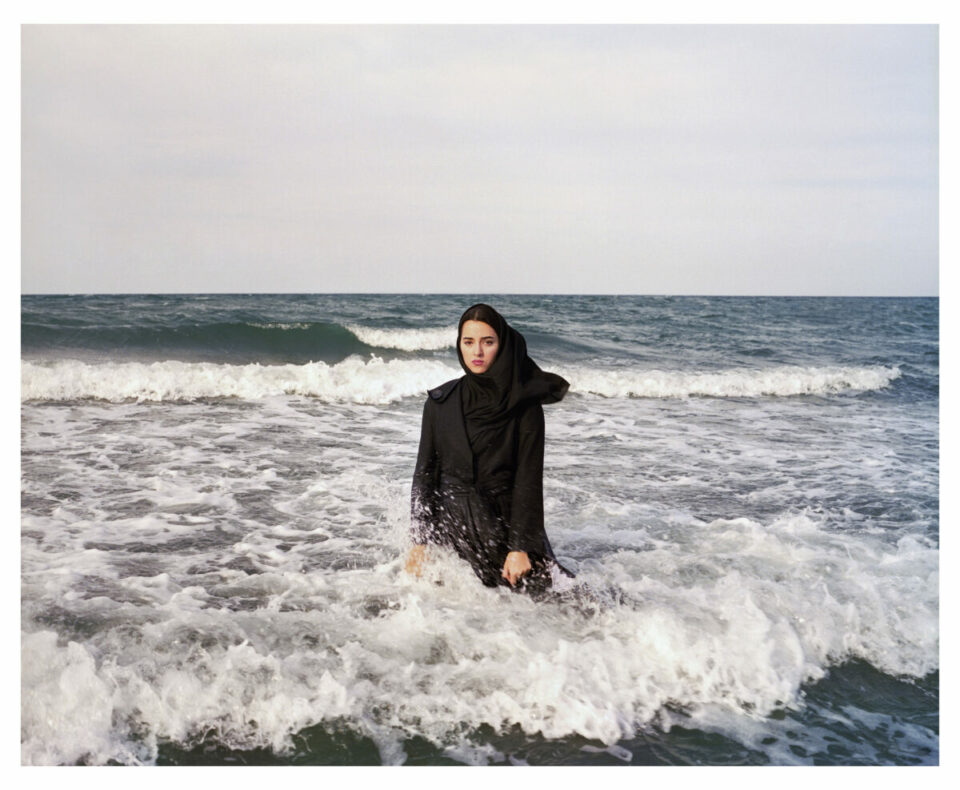In 1881, a London newspaper sent a female war correspondent to Africa. The response of the Saturday Evening Post was to quip: “we shall now learn what the women there wear.” Those that worked as journalists at the turn of the 20th century, of which there were very few, were sidelined to the “society pages” and denied the opportunity to report on issues of politics or international affairs. Yet, there are still figures who wrote, photographed and reported on their own terms, people like Nellie Bly who exposed conditions of American asylums or Ida B. Wells, a prominent journalist and activist who was one of the founders of the National Association for the Advancement of Coloured People. Consuelo Kanaga (1894 – 1978) was one of these characters. In the 1960s, Dorothea Lange declared her friend to be “way ahead of her time.” One of the few women to become a staff photojournalist at a major newspaper in the 1910s, Kanaga was an artist that pushed boundaries, drawing national attention to issues of working conditions, gender inequality and the struggle for Civil Rights.

Now, a new publication from Thames & Hudson brings the work of this pioneering photographer to life. The book shares 200 photographs that document her development as an artist and her abiding interest in the social conflicts of her time. Only in understanding each aspect of Kanaga’s oeuvre can we fully comprehend her reach, both for her contemporaries and modern audiences. The volume not only questions why she is largely overlooked in the celebrations of visionary US artists but begins to set this right.
Born in Oregon in 1894 to a successful lawyer and judge, Consuelo Kanaga first entered the print media world in 1915, when she got a job as a feature writer and part-time photographer for the San Francisco Chronicle. Although she was undoubtedly a trailblazer, described by Dorothea Lange as the first female reporter she ever met, Kanaga was also constrained by gender and class. She was married several times, moved across the country almost constantly, and often put her art on hold for extended periods of time whilst she took up other work to make ends meet financially.
Her work for newspapers and magazines not only took her to new locales but often connected her with other artists. At the New York American she met Donald Litchfield, with whom she began a romantic relationship, as well as lifelong collaborator Alfred Steiglitz. She soon turned her attention to portrait photography and the plight of those experiencing discrimination in the US. As early as the 1920s, her portraiture and photojournalism documenting poverty were attentive to the expressive potential of the human face. It is this collection of work that survives more than any other and her portraits of Black and working-class Americans that became the focal point of her career from the 1930s onwards.

Integral to Kanaga’s reputation among friends and professional acquaintances was her fascination with Black life and culture. One of her earliest images, Hands, from 1930, is a close-up of two embracing hands, one presumably belonging to a Black man and the other to a white woman. Across many years, she produced a number of formal studies of a young woman named Francis and a young man named Eluard Luchell McDaniel, accentuating the play of shadow and light across their faces. Produced during the 1920s and 1930s, when lynching and other acts of discrimination and terror were some of the most urgent ethical and legal questions, Kanaga’s images can be seen as asserting what she believes was the intrinsic beauty and equality of Black people. Yet, her work is a balancing act between genuine and authentic advocacy and support for Civil Rights, and views that root her firmly as a product of her time. The book explores these two conflicting opinions, offering a nuanced portrait of her relationship with these communities. In a 1936 letter to friend Albert M. Bender, she wrote: “Why wasn’t I born black? I would have loved it so.” Shalon Parker, co-author of the volume, writes that Kanaga shows “a striking mixture of deep awareness of the gritty realities faced by African Americans in the early twentieth century and sweeping romantic notions of Blackness.”

Her pioneering work, ahead of its time both in terms of advocacy for Civil Rights and how she chose to frame and shoot her images, have left a legacy that continues to be felt in modern photography. As the book suggests: “Her approach would no doubt influence her friend Lange, whose well-known image Migrant Mother, Nipomo, California, photographed more than a decade later, in 1936, features a similar composition of a mother and her children.” She paved the way for other female artists, opening doors and setting a precedent for how women could actively participate in artistic and journalistic worlds. But perhaps her most perservering legacy comes in what she chose to capture. Her unwavering dedication to drawing attention to urgent social issues, from urban poverty and labour rights to racial terror and inequality is as relevant today as it has ever been.
Consuelo Kanaga is published by Thames & Hudson: thamesandhudson.com
Words: Emma Jacob
Image Credits:
Consuelo Kanaga. Kenneth Spencer. 1933. © Brooklyn Museum.
Consuelo Kanaga. Untitled. 1936. © Brooklyn Museum.
Consuelo Kanaga. Young Girl in Profile. 1948. © Brooklyn Museum.
Consuelo Kanaga. Hands. 1930. © Brooklyn Museum.





